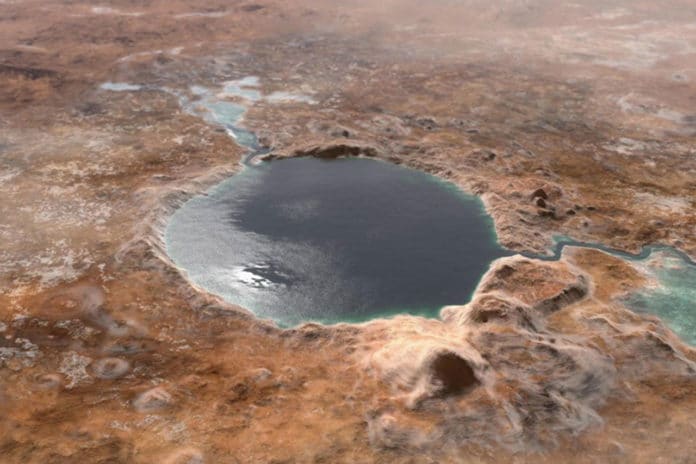Electrolysis- is a process that uses electricity to split water into hydrogen and oxygen- requires removing the salt. It is a cumbersome, costly endeavor in a harsh, dangerous environment.
If oxygen and hydrogen could be directly coerced out of briny water, this electrolysis process would be much less complicated—and less expensive.
A new technology developed by engineers at the McKelvey School of Engineering at Washington University in St. Louis does the same. While being useful on Earth, where it opens up the oceans as a viable oxygen and fuel source, this new technology, i.e., brine electrolyzer, can get oxygen, fuel from Mars’s salty water as well.
Vijay Ramani from the enter for Solar Energy and Energy Storage, Washington University in St. Louis said, “Our Martian brine electrolyzer radically changes the logistical calculus of missions to Mars and beyond.”
The system can produce 25 times more oxygen than MOXIE using the same amount of power. It also has hydrogen, which could be used to fuel astronauts’ trip home.
This brine electrolyzer contains a lead ruthenate pyrochlore anode developed in conjunction with platinum on carbon cathode. The careful design and unique anode allow the system to function without heating or purifying the water source.
Ramani said, “These carefully designed components coupled with the optimal use of traditional electrochemical engineering principles, has yielded this high performance.”
Shrihari Sankarasubramanian, a research scientist in Ramani’s group and the joint first author of the paper, said, “Paradoxically, the dissolved perchlorate in the water, so-called impurities, actually help in an environment like that of Mars.”
“They prevent the water from freezing and also improve the performance of the electrolyzer system by lowering the electrical resistance.”
Pralay Gayen, a postdoctoral research associate in Ramani’s group and also a joint first author on this study, said, “Having demonstrated these electrolyzers under demanding Martian conditions, we also intend to deploy them under much milder conditions on Earth to utilize brackishly, or saltwater feeds to produce hydrogen and oxygen, for example through seawater electrolysis.”
Journal Reference:
- Pralay Gayen et al., “Fuel and oxygen harvesting from Martian regolith brine,” PNAS (2020). DOI: 10.1073/pnas.2008613117
